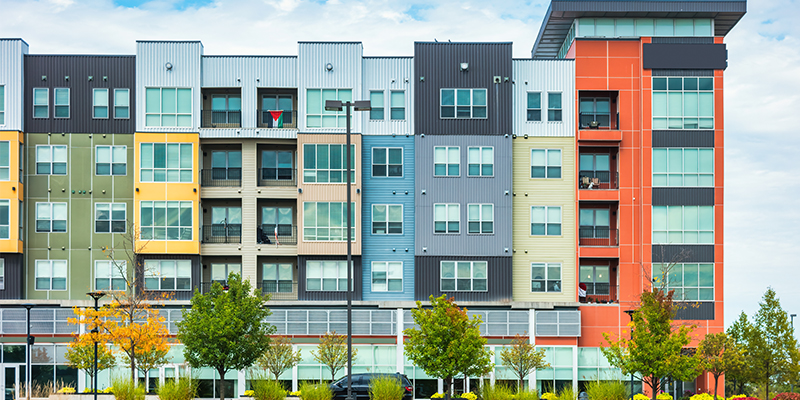By Kathryn Hamilton
An all-star panel of East Coast industrial developers and investors wrapped up NAIOP’s I.CON East in New Jersey this week with a candid look at market dynamics across the Eastern U.S., covering the Northeast, Mid-Atlantic and Southeast regions. The discussion explored where capital is flowing, key macroeconomic influences on the sector, and the primary challenges and opportunities emerging within these markets.
Moderated by Mark Russo, vice president, industrial research, Savills, the panelists were Gregory Boler Jr., founder and managing partner, KMT Partners LLC; Clark Machemer, senior managing director, industrial group, Crow Holdings Development; Alex Redfearn, founder, president and CEO, Redfearn Capital, LLC; and Lex Rickenbaker, managing director – investments, Affinius Capital.
Russo opened by quoting the latest reports from Savills that say industrial vacancy in almost every market is at or above a 10-year high. He noted that there was a similarly slow industrial market 15 years ago, which increased incrementally until the jet-fueled period post-pandemic and the glut of new supply that followed. Now, it’s cooling again.
“I’ve been a part of three turndowns,” said Machemer. “In 2010 there wasn’t any capital to be found, and then again in 2020, when I wondered if we’d ever sign another lease. Now we’re here again, and the truth is that some buildings have been built in places that just don’t make sense, and they’re going to be hard to lease. Premier sites are going to fare better than [Class] B or C sites, and it’s going to take market knowledge and deep insight to distinguish between real vacancy and space that’s likely to remain unoccupied for the foreseeable future.”
The size of the building is an important part of its prospect for success, the group agreed, with buildings between 100,000 and 400,000 square feet much more likely to attract capital. “It’s extremely tough at 500,000 square feet and above,” said Boler.
With leasing down 25% from its peak, it’s difficult to predict where it will settle and which time period the new “normal” most closely resembles. “We’re starting to see an uptick in build-to-suit, specifically on the bulk side,” said Rickenbaker, noting that slower deal velocity, tighter underwriting, and stronger focus on building sizes are part of discussions.
Pockets of demand are “region- and submarket-specific,” said Redfearn. In Florida, spaces in the 10,000-50,000-square-foot range are the target base size, particularly for e-commerce suppliers that want to be close to customers in order to provide delivery in two hours versus two days.
Savannah, Georgia, and Charleston, South Carolina, are two port markets that were booming a few years ago but now have double-digit vacancy rates. “The Port of Georgia is doing around $4 billion in improvements and expanding their berths,” Boler said, noting that most Savannah vacancies are in spaces 600,000 square feet and larger.
“Once we get back to net absorption of 2018 and 2019, that space in Savannah will be gobbled up,” he said. “Hyundai just brought a 3,000-acre electric vehicle megaplant online, and Burlington Stores recently completed a two-million-square-foot build-to-suit in the market.”
The next emerging markets might be ones you’ve already heard of, predicted Machemer. “When the markets are down, the emerging markets are the [class] A markets where the allocations are going to always do well,” he said. “They’re the proven markets.”
An audience-submitted question asked the panelists their thoughts on cap rates and residual cap rates given higher rates and slowing rent growth.
“Right now in Atlanta, we’re generally underwriting at a 5.5% cap [rate]. While I do think interest rates will eventually come down, I’m not convinced that will have a major impact on cap rates in the near term,” said Boler. “The real driver, in my view, is the sustained capital demand for industrial assets. That demand will ultimately put pressure on cap rates and drive some compression – maybe 25 to 50 basis points on exit.”
“In some ways, I think we’re heading back to what the market looked like when I got into speculative merchant development about a decade ago. Back then, you could hit a 6.5% yield on cost and sell into a 5% exit cap, picking up around 150 basis points. I see us returning to that environment, but it’s going to take some time to get there,” he said.
The importance of community relationships can’t be ignored, the panelists all agreed. “We have to do a better job of making sure our buildings are good buildings and [that we] respect the community where they’re happening,” said Machemer. “We need creativity when it comes to trailer parking and docks and what the building looks like.”
Machemer pointed out that the playing field between developers and municipalities is frequently imbalanced, and that developers will have to be proactive in pushing for zoning to move forward.
Niche product types also seem to have room to grow. Industrial outdoor storage (IOS) is “critical infrastructure for our supply chain,” said Boler, and Redfearn said small bay industrial is growing in Florida in what he called “service-oriented industrial” that can be management-intensive. These 2,500 square-foot spaces typically have 200-400 square feet of office space and attract tenants such as pool services, landscapers and HVAC companies.
As for who is leasing space, Machemer says he’s seen an increase in U.S.-based third-party logistics companies actively leasing, and he expects retailers to eventually resume leasing after remaining on the sidelines for the last few years. Rickenbaker emphasized that data center suppliers are a new user in the market, taking spaces around data center hubs.
Despite today’s challenges, Machemer remains bullish. “There are some really great opportunities out there, and I think we’re going to have a stronger 2026. By 2027 and 2028, it’s going to be incredible.”

This post is brought to you by JLL, the social media and conference blog sponsor of NAIOP’s I.CON East 2025. Learn more about JLL at www.us.jll.com or www.jll.ca.








